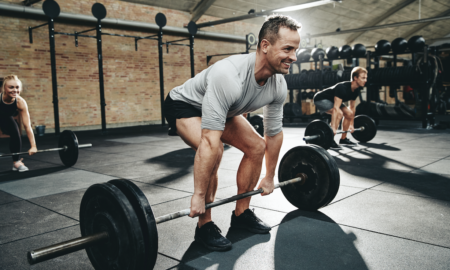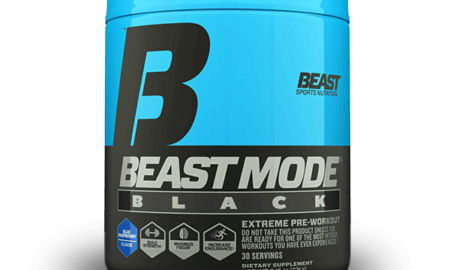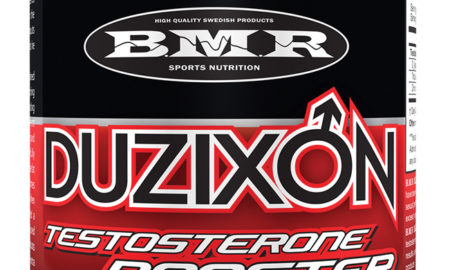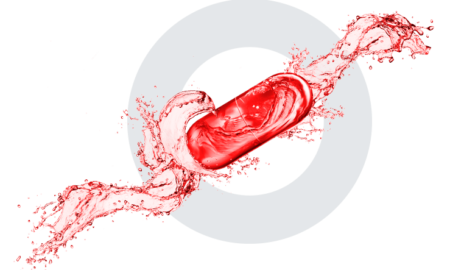The Holy Grail of drug companies and scientists has been an anabolic compound that has minimal to no androgenic side effects. That was the original goal set shortly after testosterone was first isolated in 1935.
The word anabolic refers to such properties as building and maintaining muscle mass and bone mass and helping maintain red blood cell production. Androgenic refers to properties related to inherent maleness, including development of male sex organs and a typical male body hair pattern, as well as undesirable effects, such as male-pattern baldness, prostate enlargement and acne. Thousands of anabolic drugs were researched, mainly during the ’60s, to find pure anabolic compounds. Many were never released into the commercial market, though they did experience a renaissance as so-called pro-hormone supplements touted for boosting testosterone.
They did just that—because they were discarded drugs, not food supplements. The drug companies, although always eager for major profits, had discarded them for various reasons, most related to excess toxicity.
As a result, the current drugs popularly known as anabolic steroids are, in fact, anabolic-androgenic steroids, because they have both anabolic and androgenic properties. Despite the ingenuity of more than 50 years of research, no scientist has yet been able to completely dissociate the androgenic from the anabolic in those drugs. Some steroids are more anabolic than others, but all have certain androgenic properties. That can be readily seen when female athletes use what they think are more anabolic drugs, only to discover that such drugs—depending on the dose and length of time used—produce unmistakable androgenic effects. In women, such effects are often glaringly apparent: excess facial hair, deeper voice and even male-pattern hair loss. While men who use steroids don’t gain any extra size in their sexual organs, women do, and the effect is permanent.
The often pronounced androgenic effects of anabolic steroids and testosterone itself have created problems for their medical therapeutic use. For example, giving testosterone injections to hypogonadal men—men clinically deficient in testosterone—works quite well to restore testosterone counts. The problem is that the long-acting testosterone esters that were first used for that purpose produced a superphysiological spike in blood testosterone. That was good for adding muscle size and strength, but it also increased the chances of a few unwanted effects. One such effect is a rise in red blood cell concentration, caused by testosterone-induced stimulation of erythropoietin, usually called EPO, in the kidneys.
EPO potently sparks the development of red blood cells. In fact, drug forms of EPO are used in sports for blood-doping purposes to increase endurance. In a nonathlete, however, the presence of too many red blood cells increases the viscosity, or thickness, of the blood, which is linked to strokes, among other problems.
Oral anabolic steroids were developed to overcome the usual rapid destruction in the liver of oral doses of testosterone. The oral steroids have structural modifications that blunt premature liver breakdown. True, that change prevents the major drawback of rapid destruction in the liver, but it also lets the oral steroid build up in the liver. Whether problems ensue is a matter of time and dosage, with longer drug use and higher doses more likely to lead to serious liver problems.
All oral steroids do induce temporary inflammation of the liver, recognized by an elevation in liver enzymes. The orals also bring on the rapid breakdown of high-density-lipoprotein cholesterol, or HDL—the good kind, and lower HDL counts are linked to cardiovascular disease. In addition, as oral anabolic steroids are not pure anabolic compounds, you’re still subject to all the androgenic effects of testosterone, such as male-pattern baldness, acne, prostate enlargement and so on. That’s particularly the case with the oral drugs based on the structure of dihydrotestosterone, or DHT, a by-product of testosterone metabolism thought to be the major culprit in those side effects.
In regard to testosterone therapy for men who are deficient in testosterone—usually men over 40—the major fear of doctors is that giving them testosterone will lead to prostate cancer. Prostate cancer is far more common in older men; indeed, some studies show that about 80 percent of men eventually develop a localized prostate tumor, although they usually die from something else, such as heart disease or another form of cancer. As I’ve pointed out in this space previously, the notion that normal testosterone counts bring on prostate cancer is just not true, but it’s so deep-rooted in the medical psyche that drug developers have repeatedly gone back to the drawing board to come up with drugs that can provide the anabolic effects of steroids minus their androgenic effects. Such drugs ideally would have no effect on the prostate.
In 1998 the first of such drugs appeared. Termed “SARMs,” or selective androgen receptor modulators, they can interact directly with androgen receptors, just as do testosterone and anabolic steroids, but have few, if any, of those drugs’ androgenic side effects. Unlike steroids, which get their name from their cholesterol-based chemical structure, the newer SARMs are nonsteroidal. They don’t look anything like anabolic steroids or testosterone, but they mimic the drugs’ anabolic effects. Several types of SARMs have been developed by a few drug companies. The hope is that they will supplant testosterone in the treatment of male hypogonadism. The initial SARMs, like testosterone, suppressed the release of the hypothalamic and pituitary hormones that control testosterone and sperm development. Since that would be an androgenic effect, it’s clear that the initial SARMs were also not pure anabolic drugs—contrary to Internet chatter.
On the other hand, SARMs are not subject to conversion by the enzymes aromatase and 5-alpha reductase. That means they cannot be converted into estrogen or DHT. Even so, the first generation of SARMs shared some of the same side-effect profile as oral anabolic steroids—for example, depression of HDL and transient rises in liver enzymes, indicative of minor liver stress. Some suggest that, as with anabolic steroids, those effects may be linked to the oral intake of SARMs. Using another delivery method—such as injections or topical cream—may eliminate those problems. Injections would not be popular for therapeutic purposes, however, just as testosterone injections are not favored by many men considering testosterone therapy. Patient resistance resulted in the development of the currently preferred forms of T therapy, such as topical skin creams.
Research has shown that some of the beneficial effects of testosterone are linked to its conversion into estrogen by way of the ubiquitous enzyme aromatase: a rise in protective HDL and even an increase in libido. Ongoing research shows that estrogen in the brain may be associated with sex drive in men. SARMs wouldn’t do that.
What about building muscle? Are SARMs as effective as anabolic steroids? Studies of the first generation of SARMs showed that they induced modest gains in lean mass in healthy subjects—but nowhere near what happens with testosterone or anabolic steroids. For example, one study found that SARMs produced a gain of 1.0 to 1.5 kilograms of lean mass over four to six weeks. Meanwhile, studies of injectable testosterone show gains of five to seven kilograms of lean mass in about the same period. Some of the newer generations of SARMs may be considerably more potent than the original versions in that regard, but that remains to be seen.
The potential muscle-building properties of SARMs haven’t gone unnoticed by athletic antidoping organizations. One such group, the World Anti-doping Agency, added all SARMs to its prohibited list in January 2008, even though SARMs are still considered experimental drugs and have not been offered for commercial sales by any legitimate companies. The key word here is legitimate, for SARMs have been available on the Internet for at least two years. Like other exotic, putatively anabolic compounds available online, they have achieved cult status, despite little or no evidence of their role in adding muscle size or strength. The price of Internet SARMs varies, but it isn’t cheap: $140 to $179. That’s more expensive than anabolic steroids, which do have a proven track record.
One notable problem with purchasing items online, particularly drugs, is that you never know if what you’re buying is the real deal. As a research study recently showed, at least one Web site is actually selling one of the original SARMs, known as S4.1 The author purchased two bottles of S4 from a Web-based company that declared its product to be “99 percent pure.” The shipping box said it contained a mixture of green tea extracts and skin moisturizer. Analysis proved that the bottles did contain actual S4—plus 10 percent impurities, suggesting a crude “home brew” rather than a pharmaceutical-grade drug.
By the way, lucky for the authors they got what they ordered. A visit to the S4 Web site revealed no phone numbers or company address, but there was a statement that no product returns would be accepted. Add the 99-percent-pure lie, and you’ve got to wonder about credibility. Personally, I don’t understand why anyone would send money to an Internet-based company that lists zero contact information. You have no idea where it’s located. If a marketer like that decides to keep your money and close down, you have no recourse. Such sites are frequently closed down for legal reasons, such as selling unauthorized or experimental drugs, but the net effect is the same if you’re stupid enough to send cash to an unidentified and unknown party. You may get the product you sent for, or you may get nothing.
Even if you don’t consider the odds of being ripped off by one of these companies, the fact is that there’s no extensive database of effectiveness or long-term safety of SARMs. The same was true for many of the discarded steroids sold as pro-hormones or so-called designer steroids. In the case of pro-hormones, the medical literature shows that several users developed problems ranging from a rapid-growth type of prostate cancer to severe liver issues.
Only time will tell if the human guinea pigs now experimenting with Internet-acquired SARMs are risking their health. While the newer generation of SARMs may fulfill their anabolic potential or even become useful therapeutic drugs, the ones being sold now are, so to speak, not ready for prime time.
1 Thevis, M., et al. (2009). Detection of the arylpropionamide-derived selective androgen modulator (SARM) S-4 (Andarine) in a black-market product. Drug Test Analy. 1(8):387-92.
Editor’s note: Jerry Brainum has been an exercise and nutrition researcher and journalist for more than 25 years. He’s worked with pro bodybuilders as well as many Olympic and professional athletes. To get his new e-book, Natural Anabolics—Nutrients, Compounds and Supplements That Can Accelerate Muscle Growth Without Drugs, visit www.JerryBrainum.com. IM




















You must be logged in to post a comment Login